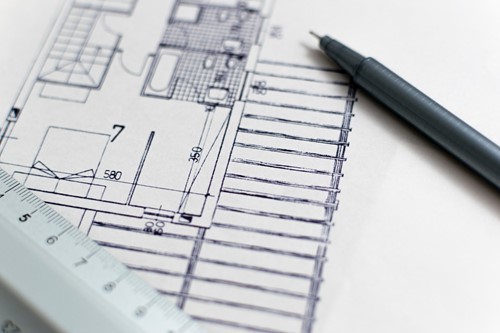
Image by Lorenzo Cafaro from Pixabay
The need for accessible new construction homes may never be higher than it is right now. U.S. soldiers have returned home with disabilities, and the number of aging Americans with growing physical limitations is expected to increase dramatically. The first wave of Baby Boomers reached retirement age in 2011, and more than 54 million Americans are 65 or older, according to the U.S. Census. These demographic facts point to a prevalent need for more accessible residential homes.
Although everyday people might expect the government to mandate accessible living regulations through the Americans with Disabilities Act (ADA), the federal law does not necessarily apply to private residential homes. That means contractors are free to capitalize on popular design elements. But accessible homes may already be highly sought after, even though modern homes and architectural magazines are not in tune with the data. By overcoming the minor challenges of building state-of-the-art accessible homes, contractors may discover that those properties could be listed at a premium.
The ADA became law in 1990, and it establishes the legal rights of people with disabilities to enjoy unimpeded physical access to public buildings and spaces. It does not necessarily create building codes for private-sector residential homes. This is not to say that architects and contractors cannot build ADA-complaint houses. These are general concepts worth considering that underscore accessibility.
The ADA establishes detailed building criteria for public buildings and adapting existing living spaces. Builders may discover that the sometimes subtle differences are worth negotiating even if they are building spec homes.
From the builder’s perspective, accessibility may have largely been considered retrofitting. Until the last decade or so, maximum return on investment for new construction homes were driven by factors that included comfy starter homes with room to grow, gated communities for retirees and upscale houses with expansive floor plans. Those types of houses are being retrofitted today. Getting ahead of the real estate curve by adapting new construction to the ADA calls for only minor changes such as the following.
Any hesitancy that architects and new construction home builders have about making homes fully accessible can be offset by recognizing these properties may be more valuable on the market. Real estate professionals can promote them toward families who have a loved one with limitations, aging Americans or point out that ADA-compliance also tends to be ergonomically beneficial.

Welcome to my real estate website, your number one source in Real Estate. As an agent who's an expert in this local area, I bring a wealth of knowledge and expertise about buying and selling real estate here. It's not the same everywhere, so you need someone you can trust for up-to-date information. I am eager to serve you. Here are some of the things I can do for you:
Find Your Next Home
You need someone who knows this area inside and out! I can work with you to find the right home at the right price for you, including all the neighborhood amenities that matter - not to mention the essential criteria you have for your ideal home
Sell a Home
When it's time to move, you need someone who will advertise your home, show to prospective buyers, negotiate the purchase contract, arrange financing, oversee the inspections, handle all necessary paperwork and supervise the closing. I can take care of everything you need, from start to close.
Consult on Home Selling Tactics
Oftentimes buyers don't visualize living in your home the way you do. I can make your home attractive to its ideal audience - which can help you get top dollar. Things like staging the home, making repairs or minor improvements, or even simply painting the walls can be the difference between a home resting on the market and one that's sold fast.
Feel free to contact me today. I love what I do!!